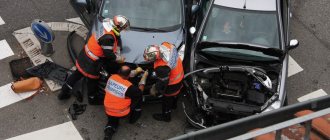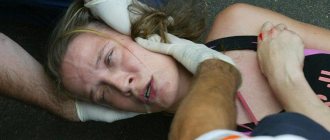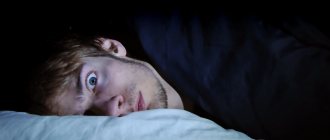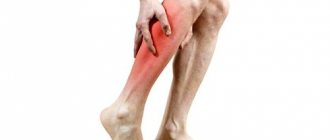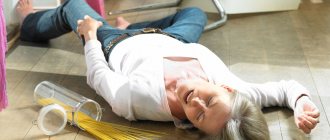Emergency care for seizures is often the only way to save a person’s life. This condition manifests itself in involuntary paroxysmal muscle contractions that occur under the influence of various types of stimuli.
The appearance of seizures is associated with the pathological activity of certain groups of neurons, which are expressed in spontaneous brain impulses. Therefore, a seizure can occur in both an adult and a child.
Statistics show that convulsive syndrome most often occurs in preschool children. Moreover, in the first three years of a baby’s life, it is recorded most of all. This fact is explained by the fact that in children of preschool age, excitatory reactions prevail over inhibitory ones due to the immaturity of some brain structures.
After providing emergency care for convulsive syndrome, adults and children must be diagnosed to identify the causes of convulsions.
general characteristics
Various convulsive syndromes rank third in terms of overall incidence in the population after cardiovascular pathology and diabetes mellitus.
They account for 20% of all neurological disorders. Pathological symptoms more often occur in children (up to 15 years) and old age. Cramps are felt as involuntary spastic contractions of skeletal muscles - individual muscle groups or the entire body - of varying intensity, short-term or long-term. They arise spontaneously or are provoked by acute pathology or the action of external factors. Severe convulsive twitching of the muscles of the limbs and torso disrupts musculoskeletal function, leading to falls and injuries. Spastic tension is painful, often accompanied by arching or turning of the body, deviation of the head and eyes to one side. Tonic-clonic seizures are manifested by disturbances of consciousness and breathing, urinary incontinence, some are preceded by focal neurological symptoms. Single episodes have a favorable prognosis, but frequent seizures disrupt habitual activity and reduce the patient’s quality of life.
What should you not do during an attack?
There is no need to restrain a person by force, try to bring him to his senses, hit him in the face, or bother him.
This will lead to greater trauma for the patient. If your teeth are clenched, there is no need to force your jaw open. Muscles are hypertonic and such actions can injure teeth, tongue and block the airways with tooth fragments. You cannot move or transfer a person to another place; such measures are necessary if the attack began in a place that threatens life. Immediately after its completion, there is no need to give the victim water or medications, because muscle function has not yet been restored and the patient may choke. You can't do chest compressions or artificial ventilation.
Classification
According to the mechanism of formation, convulsions are classified as rapid hyperkinesis, in the structure of which the phasic component predominates. They are divided into epileptic and non-epileptic, primary (idiopathic) and symptomatic (secondary). Depending on the nature of the predominant involvement of skeletal muscles, there are several types of convulsive contractions:
- Tonic
. Sharp and prolonged (up to several tens of seconds) muscle tension caused by the arrival of a nerve impulse of long duration. Leads to “freezing” of the limbs or body in a forced position. - Clonic
. Muscle spasms are short-term and irregular in nature, with rapid alternation of periods of contraction and relaxation. They have a locomotor effect, accompanied by motor acts. - Mixed
. Convulsive attacks characterized by a change from a tonic component to a clonic one or vice versa are called mixed. In most cases they are generalized (widespread) in nature.
Tonic spasms underlie athetosis; a type of clonic spasms is myoclonus - sudden and sharp (lasting up to a second) contractions of the flexor muscles. Based on the group of muscles affected, cramps can be flexor (flexor), extensor (extensor), or mixed. An important criterion that has found a place in the clinical classification is the prevalence of seizures, which allows us to distinguish two types of paroxysms:
- Partial (focal)
. They arise due to local activity involving a group of motor neurons. Accompanied by clonic or tonic contractions. They can be simple (without loss of consciousness), complex, secondary generalized. - Generalized
. Excitation immediately covers the entire cortex without the presence of an isolated focus, so the muscles of the entire body are involved in a seizure. Paroxysms are clonic, tonic, tonic-clonic. Myoclonic and atonic seizures are also distinguished.
Some conditions combine signs of focal and generalized paroxysms or are of an unspecified nature. In pediatric practice, afebrile and febrile convulsions, neonatal and infantile paroxysms are distinguished. The international classification for some seizures takes into account the prognosis (benign, severe).
Need for first aid
First aid for a seizure can be provided by any person who witnessed the event. It consists of simple and consistent actions that must be performed quickly and clearly.
Moreover, you need to understand that calling an ambulance is a mandatory action in such conditions. If you don't have time to make a phone call, ask people nearby for help. When talking to the dispatcher, indicate the nature of the seizures.
Let's consider the algorithm of actions for providing first aid for convulsive syndrome of any type.
Note!
Muscle spasms are most often accompanied by a fall. Therefore, first of all, it is necessary to prevent injury to a person by removing dangerous objects and placing soft things on the floor.
- Unbutton any items of clothing the victim may be wearing that may restrict breathing or interfere with the free flow of air.
- If the jaw is not clenched, roll the soft tissue into a small roll and insert it into the patient's mouth. This way you can avoid tongue biting.
- If possible, roll the person onto their side. In case of intense movements, fix your head in this position: this way, if vomiting occurs, the person will not be able to choke on the vomit.
Note!
If the patient's jaws are tightly clenched, they should not be forcibly opened to place tissue.
If before the onset of the attack the child was hysterical with loud crying and screaming, and with the onset of the spasm the complexion changed or cardiac activity was disrupted, first aid is to prevent the baby from breathing problems. To do this, you need to sprinkle it with cold water or bring a cotton wool moistened with ammonia to your nose.
Further assistance to the child and adult takes place in a medical institution.
Why do seizures occur?
Causes of tonic seizures
Prolonged muscle tension occurs against the background of excessive excitability of cerebral structures, in conditions of disruption of the cortical regulation of segmental functions. Very often, neurons are negatively affected by toxic, metabolic factors, and endocrine and metabolic disorders. The causes of tonic seizures are the following conditions:
- Infections
: tetanus, rabies, febrile syndrome. - Electrolyte disturbances
: hypocalcemia, hyperkalemia, hypomagnesemia. - Endocrine disorders
: hyper- and hypoglycemia, hyperinsulinism. - Hereditary metabolic diseases
: amino acid (leucinosis, phenylketonuria), carbohydrate (glycogenosis, galactosemia), lipid (Gaucher disease, Norman-Wood disease). - Cardiovascular pathology
: complete atrioventricular block, acute hypotension. - Renal and liver failure
: uremia, bilirubin encephalopathy. - Psychogenic disorders
: hyperventilation syndrome, hysteria. - Epileptic syndromes of childhood
: Lennox-Gastaut encephalopathy, Otahara encephalopathy, infantile spasms. - Intoxication
: alcohol, carbon monoxide poisoning, strychnine. - Overdose of drugs
: morphine, antipsychotics. - The effect of physical factors
: severe overheating or hypothermia, electrical injuries, the influence of radiation.
Sometimes painful spasms are of a professional nature, occurring during prolonged muscle tension in stenographers, musicians, and milkmaids. Leg cramps are common among athletes and people whose work involves standing for long periods of time. They are often observed during pregnancy, with vascular pathology of the lower extremities - varicose veins, obliterating atherosclerosis, endarteritis.
Causes of clonic seizures
Pathological impulses that provoke short-term spasms of skeletal muscles are formed in higher cortical centers, the extrapyramidal system or peripheral motor neurons. Some clonic seizures develop due to focal damage to the brain stem or spinal cord due to tumors and strokes. Other causes of such seizures include:
- Focal epileptic seizures
. - Children's infections
: measles, chickenpox, influenza, parainfluenza. - Severe myoclonic epilepsy of infancy (Dravet syndrome)
. - Diffuse damage to gray matter
: Creutzfeldt-Jakob disease, subacute sclerosing panencephalitis. - Neurodegenerative conditions
: Tay-Sachs, Alpers diseases. - Non-progressive encephalopathies
: with Down syndrome, tuberous sclerosis. - Neonatal paroxysms
: “fifth day seizures”, benign familial epilepsy. - Poisoning
: drugs (piperazine, ergotamine), chemicals (formaldehyde, arsenic).
Causes of tonic-clonic seizures
Often in the clinical picture there is a change from tonic convulsive contractions to clonic ones. Generalized mixed seizures are a typical sign of epilepsy and its severe complication - epistatus. The occurrence of paroxysmal electrical activity of brain neurons is caused by a wide range of damaging factors:
- Cerebral pathology
: vascular disorders (CVA, arteriovenous malformations, aneurysms), traumatic brain injuries, tumors. - Infectious diseases
: polio, cholera, neuroinfections (meningitis, encephalitis, abscesses). - Arterial hypertension
: renal eclampsia, convulsive form of hypertensive crisis. - Toxicoses of pregnancy
: eclampsia. - Hereditary pathology
: leukodystrophy. - Intoxication
: nicotinic, narcotic (amphetamine, cocaine), poisoning (organophosphorus compounds, oxalic acid, lead). - Overdose of medications
: caffeine, atropine, amitriptyline, etc.
Diagnostics
The initial examination of the patient involves the analysis of anamnestic information (time of onset of the disease, the presence of predisposing factors) and identification of objective signs. But taking into account the polymorphism of the causes of seizures, it is not possible to establish the correct diagnosis using clinical data alone. Therefore, the patient is recommended to undergo a comprehensive examination:
- Tomography
. To identify ischemic-hemorrhagic, inflammatory foci, it is preferable to do an MRI of the brain. CT scan of the head clearly visualizes tumors, injuries and abnormalities of the skull bones, and expansion of the ventricular system. Vascular defects - malformations, thrombotic occlusion, aneurysms - are diagnosed using non-invasive CT or MR angiography of the cerebral arteries. - Electroencephalography
. The study of brain biopotentials makes it possible to identify pathological activity in the form of local or generalized discharges (peaks, sharp waves, spike-wave complexes). Violations are assessed when performing provocative tests - photostimulation, hyperventilation. For better documentation of paroxysms, it is recommended to conduct video-EEG recording with myography. - Lab tests
. The causes of some seizures are established on the basis of a blood test with the determination of biochemical parameters (electrolytes, glucose, renal, liver tests), and a toxicological study. Suspicion of an infectious etiology of epileptiform paroxysms requires serological tests (ELISA, RIF), molecular genetic analysis (PCR). Clinical and bacteriological analysis of cerebrospinal fluid is often performed.
To exclude possible cardiac pathology, an ECG is done; in case of toxicosis of pregnancy, a general urinalysis is prescribed; structural pathology of the kidneys and liver is detected by ultrasound results. Diagnosis of convulsive syndrome is carried out by a neurologist, but based on the expected etiological factors, related specialists may be involved. It is necessary to differentiate primary and symptomatic epileptic seizures, to distinguish them from other paroxysmal conditions - syncope, migraine, tremor, etc.
First aid for seizures
Famous epileptics
People who went down in history were also susceptible to epilepsy. Among them are Julius Caesar, Alexander the Great, Nostradamus, Dante Alighieri, Ivan the Terrible, Napoleon Bonaparte, Alfred Nobel.
For example, epilepsy was one of the diagnoses of the brilliant Ludwig van Beethoven. In addition, epilepsy was a constant companion of Nicolo Paganini and is considered one of the supposed reasons why the great composer avoided people and they were in no hurry to get closer to him.
Vincent Van Gogh suffered from epilepsy and it is believed that the order of society brought him to mental illness for this reason. There is even a version that the artist cut off his ear in a fit, unable to control his hands.
Lewis Carroll, Lord Byron, Fyodor Dostoevsky, Charles Dickens, Pyotr Tchaikovsky - all these famous writers, composers, poets and many other famous people suffered from epilepsy.
Of the living stars, Elton John, actor Hugo Weaving and many others are susceptible to epilepsy.
Treatment of seizures
Help before diagnosis
Regardless of the cause, seizures are an acute condition that requires qualified medical care. Local painful spasms can be eliminated by self-massage, pinching, or stretching the muscle. When a generalized attack develops, it is important to provide first aid to the victim: place a cushion or pillow under the head, turning it on its side, clear the mouth of foam and mucus, and provide access to fresh air. The ambulance team stops the paroxysm with anticonvulsants; in case of high fever in children, antipyretics are administered.
Conservative therapy
Hospitalization is necessary for everyone who has developed a seizure for the first time, with severe and prolonged paroxysms, or with the presence of aggravating pathology. After verification of the diagnosis, along with symptomatic correction, treatment of seizures involves eliminating the causes and influencing the main pathogenetic moments of their development. Based on the clinical situation, the following groups of medications can be used to relieve attacks and treat the underlying disease:
- Anticonvulsants
. Treatment of partial and generalized epileptic seizures is carried out with lamotrigine, carbamazepine - in monotherapy or in combination with other drugs. Convulsive syndrome in organic pathology of the central nervous system can be treated with valproate, clonazepam; in the neonatal period, the drugs of choice are phenobarbital and diphenine. Refractory epistatus requires the administration of anesthesia (sodium thiopental, propofol). - Electrolytes
. Relief of spasmophilia and hyperkalemia is carried out with calcium preparations. Chloroprivate tetany and hyponatremia are treated with sodium chloride infusions; hypomagnesemia is corrected with magnesium sulfate. To eliminate metabolic alkalosis, saline solution and potassium chloride are used. - Hypotensive
. To correct blood pressure during eclampsia, including renal eclampsia, and hypertensive crises, peripheral vasodilators (sodium nitroprusside), beta blockers (esmolol), and ganglion blockers (pentamine, arfonade) are used. Diuretics - osmotic (mannitol, urea), loop (furosemide) - help eliminate concomitant cerebral edema.
In case of poisoning, antidote, detoxification, and infusion therapy are carried out; withdrawal forms of epistatus are treated with a combination of anticonvulsants and antipsychotics. Detection of neuroinfections requires appropriate antimicrobial (antibacterial, antiviral) correction; hypoglycemia is treated with glucose, pyridoxine-dependent seizures with vitamin B6. In some cases, a high-fat ketogenic diet is recommended to relieve seizure symptoms.
Surgery
Drug-resistant variants of epilepsy are an indication for more radical treatment. Among neurosurgical interventions, resections (temporal and extratemporal, hemispherectomy), disconnection operations (subpial transsections, callosotomy), and transcranial stimulating methods are practiced. As a result, it is possible to achieve a complete cessation of attacks within a year or a significant reduction in their frequency with the achievement of adequate control.
Some symptomatic seizures are also treated surgically. In case of traumatic brain injuries and strokes, early intervention is necessary, aimed at evacuation of intracranial hematoma and decompression of cerebral structures. Abscesses and brain tumors also need to be removed. Intravascular recanalization operations - intraarterial thrombolysis, thrombectomy, angioplasty with stenting - are designed to restore blood flow in ischemic areas of brain tissue.
How to spot an impending seizure
The seizure usually occurs suddenly. A person who suffers from epilepsy usually cannot accurately predict the time of an attack and the situation in which it will occur. Often, patients with epilepsy experience tension, fear that an attack will happen and that this will cause a negative reaction from others. A number of people note that they observe an aura before the onset of seizures. This may be a state of euphoria, unusual smells, sounds, a sense of taste, or a feeling that such a situation has already happened (déjà vu).
